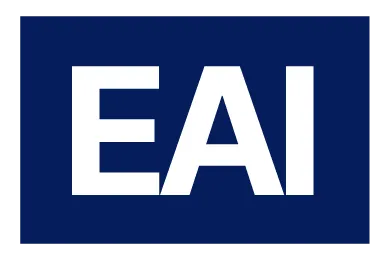
Blogs & Articles
Access our latest insight on how to increase efficiency and drive performance improvement. Stay up-to-date and ensure your projects continues to thrive.
Blogs & Articles
Access our latest insight on how to increase efficiency and drive performance improvement. Stay up-to-date and ensure your projects continues to thrive.


What are the Common Mistakes to Avoid when Implementing a Lead Capture Strategy?
Lead capture is a crucial aspect of any successful marketing campaign because it allows businesses to build a list of potential customers who have expressed interest in their products or services. By capturing the contact information of these leads, businesses can continue to market to them through email, social media, or other channels and potentially convert them into paying customers.
Lead capture can be an effective way to generate leads and increase sales for businesses of all sizes and industries. However, it's important to avoid making common mistakes that can derail your lead capture efforts. Some of these mistakes include not having a clear call to action, asking for too much information upfront, not providing value in exchange for contact information, not following up with leads, and not testing and optimizing your lead capture strategy.
By avoiding these mistakes, businesses can create a lead capture strategy that is effective and helps them generate more leads and increase sales. In this blog post, we'll take a closer look at each of these mistakes and provide tips for how to avoid them when implementing a lead capture strategy.
Not having a clear call to action:
Having a clear call to action (CTA) is essential for any lead capture strategy. A CTA is a button or link that tells visitors what you want them to do next, such as filling out a form, signing up for a newsletter, or downloading an ebook. It's important to make your CTA clear and compelling, as it will help guide visitors towards the desired action and increase the chances that they will take that action.
Your lead capture form or landing page should have a prominent CTA that is easy to find and understand. Make sure the text on the CTA button clearly communicates the value the visitor will receive in exchange for their information, such as "Get my free ebook" or "Sign up for our newsletter."
Without a clear CTA, visitors may not know what to do and may simply leave your website. This can result in lost leads and missed opportunities for conversion. By making sure you have a clear and compelling CTA, you can increase the chances that visitors will take the desired action and provide their contact information.
Asking for too much information:
While it's important to capture as much information as possible about your leads, it's also important to avoid asking for too much information upfront. If your lead capture form is too long or asks for too much information, it can be overwhelming and may discourage visitors from filling it out.
To avoid this mistake, stick to the essential information you need to qualify and nurture leads. This typically includes their name, email, and phone number. You may also want to ask for additional information, such as their job title or company, but try to limit the number of fields on your form to the minimum amount necessary.
By keeping your lead capture form concise and only asking for essential information, you can increase the chances that visitors will fill it out and provide their contact information. You can always follow up with leads later and ask for more information as needed.
Not providing value in exchange for information:
People are more likely to provide their contact information if they feel they are getting something valuable in return. Therefore, it's important to offer value in exchange for information when implementing a lead capture strategy.
One way to do this is by offering a free resource, such as an eBook or webinar, in exchange for their information. This helps to build trust with potential leads and shows that you are willing to give something of value in return for their contact information.
Other ways to provide value in exchange for information include offering discounts, free trials, or access to exclusive content. The key is to find something that will be valuable to your target audience and that will encourage them to provide their contact information.
By providing value in exchange for information, you can increase the chances that visitors will fill out your lead capture form and provide their contact information. This can help you build a list of qualified leads that you can nurture and eventually convert into paying customers.
Not following up with leads:
Capturing leads is only half the battle – it's important to follow up with them to convert them into paying customers. This is where lead nurturing comes into play. Lead nurturing is the process of building a relationship with potential customers over time through targeted and personalized communication.
To effectively nurture leads, it's important to have a plan in place for reaching out to them on a regular basis. This could involve sending targeted emails, making personal phone calls, or sending direct mail. The key is to provide value and build trust with your leads through consistent and personalized communication.
There are a few key elements to consider when developing a lead nurturing plan:
Segmentation: It's important to segment your leads based on their interests, needs, and behavior. This will allow you to send targeted and relevant communication that is more likely to resonate with your leads.
Timing: The timing of your communication is important. You don't want to overwhelm your leads with too many emails or calls, but you also don't want to go too long without reaching out to them. Find a balance that works for your audience.
Value: Make sure your communication provides value to your leads. This could be in the form of helpful resources, tips, or offers that will be of interest to them.
By following up with leads and nurturing them through targeted and personalized communication, you can increase the chances of converting them into paying customers. So, it is very important to have a plan in place for nurturing leads and reaching out to them on a regular basis.
Not testing and optimizing your lead capture strategy:
Testing and optimizing your lead capture strategy is essential to see what's working and what's not. This allows you to make improvements and adjustments to your strategy to increase the chances of capturing leads and converting them into paying customers.
There are a few key elements of your lead capture strategy that you should test and optimize:
Call to action (CTA): Your CTA is the button or link that tells visitors what you want them to do next, such as filling out a form or signing up for a newsletter. Try testing different CTA's to see which ones perform the best. This could include changing the text on the button, the color, or the placement on the page.
Lead capture form: Your lead capture form is the form that visitors fill out in order to provide their contact information. Try testing different form layouts, the number of fields, and the language used to see which ones perform the best.
Landing page: Your landing page is the page that visitors land on when they click on your CTA. Make sure to optimize your landing page for lead capture by including a clear CTA, compelling copy, and a visually appealing design.
By testing and optimizing your lead capture strategy, you can improve the effectiveness of your efforts and increase the number of leads you capture. This can help you grow your business and increase sales. So, it is very important to continuously test and optimize your lead capture efforts to see what's working and what's not.
Summary
Lead capture is a critical element of any successful marketing campaign, as it allows businesses to attract and capture the contact information of potential customers. By avoiding common mistakes, businesses can create an effective lead capture strategy that helps them generate more leads and increase sales.
Some of the mistakes to avoid include not having a clear call to action, asking for too much information upfront, not providing value in exchange for information, not following up with leads, and not testing and optimizing your lead capture strategy. By following best practices and avoiding these mistakes, businesses can create a lead capture strategy that is effective and helps them grow their customer base and increase sales.

What are the Common Mistakes to Avoid when Implementing a Lead Capture Strategy?
Lead capture is a crucial aspect of any successful marketing campaign because it allows businesses to build a list of potential customers who have expressed interest in their products or services. By capturing the contact information of these leads, businesses can continue to market to them through email, social media, or other channels and potentially convert them into paying customers.
Lead capture can be an effective way to generate leads and increase sales for businesses of all sizes and industries. However, it's important to avoid making common mistakes that can derail your lead capture efforts. Some of these mistakes include not having a clear call to action, asking for too much information upfront, not providing value in exchange for contact information, not following up with leads, and not testing and optimizing your lead capture strategy.
By avoiding these mistakes, businesses can create a lead capture strategy that is effective and helps them generate more leads and increase sales. In this blog post, we'll take a closer look at each of these mistakes and provide tips for how to avoid them when implementing a lead capture strategy.
Not having a clear call to action:
Having a clear call to action (CTA) is essential for any lead capture strategy. A CTA is a button or link that tells visitors what you want them to do next, such as filling out a form, signing up for a newsletter, or downloading an ebook. It's important to make your CTA clear and compelling, as it will help guide visitors towards the desired action and increase the chances that they will take that action.
Your lead capture form or landing page should have a prominent CTA that is easy to find and understand. Make sure the text on the CTA button clearly communicates the value the visitor will receive in exchange for their information, such as "Get my free ebook" or "Sign up for our newsletter."
Without a clear CTA, visitors may not know what to do and may simply leave your website. This can result in lost leads and missed opportunities for conversion. By making sure you have a clear and compelling CTA, you can increase the chances that visitors will take the desired action and provide their contact information.
Asking for too much information:
While it's important to capture as much information as possible about your leads, it's also important to avoid asking for too much information upfront. If your lead capture form is too long or asks for too much information, it can be overwhelming and may discourage visitors from filling it out.
To avoid this mistake, stick to the essential information you need to qualify and nurture leads. This typically includes their name, email, and phone number. You may also want to ask for additional information, such as their job title or company, but try to limit the number of fields on your form to the minimum amount necessary.
By keeping your lead capture form concise and only asking for essential information, you can increase the chances that visitors will fill it out and provide their contact information. You can always follow up with leads later and ask for more information as needed.
Not providing value in exchange for information:
People are more likely to provide their contact information if they feel they are getting something valuable in return. Therefore, it's important to offer value in exchange for information when implementing a lead capture strategy.
One way to do this is by offering a free resource, such as an eBook or webinar, in exchange for their information. This helps to build trust with potential leads and shows that you are willing to give something of value in return for their contact information.
Other ways to provide value in exchange for information include offering discounts, free trials, or access to exclusive content. The key is to find something that will be valuable to your target audience and that will encourage them to provide their contact information.
By providing value in exchange for information, you can increase the chances that visitors will fill out your lead capture form and provide their contact information. This can help you build a list of qualified leads that you can nurture and eventually convert into paying customers.
Not following up with leads:
Capturing leads is only half the battle – it's important to follow up with them to convert them into paying customers. This is where lead nurturing comes into play. Lead nurturing is the process of building a relationship with potential customers over time through targeted and personalized communication.
To effectively nurture leads, it's important to have a plan in place for reaching out to them on a regular basis. This could involve sending targeted emails, making personal phone calls, or sending direct mail. The key is to provide value and build trust with your leads through consistent and personalized communication.
There are a few key elements to consider when developing a lead nurturing plan:
Segmentation: It's important to segment your leads based on their interests, needs, and behavior. This will allow you to send targeted and relevant communication that is more likely to resonate with your leads.
Timing: The timing of your communication is important. You don't want to overwhelm your leads with too many emails or calls, but you also don't want to go too long without reaching out to them. Find a balance that works for your audience.
Value: Make sure your communication provides value to your leads. This could be in the form of helpful resources, tips, or offers that will be of interest to them.
By following up with leads and nurturing them through targeted and personalized communication, you can increase the chances of converting them into paying customers. So, it is very important to have a plan in place for nurturing leads and reaching out to them on a regular basis.
Not testing and optimizing your lead capture strategy:
Testing and optimizing your lead capture strategy is essential to see what's working and what's not. This allows you to make improvements and adjustments to your strategy to increase the chances of capturing leads and converting them into paying customers.
There are a few key elements of your lead capture strategy that you should test and optimize:
Call to action (CTA): Your CTA is the button or link that tells visitors what you want them to do next, such as filling out a form or signing up for a newsletter. Try testing different CTA's to see which ones perform the best. This could include changing the text on the button, the color, or the placement on the page.
Lead capture form: Your lead capture form is the form that visitors fill out in order to provide their contact information. Try testing different form layouts, the number of fields, and the language used to see which ones perform the best.
Landing page: Your landing page is the page that visitors land on when they click on your CTA. Make sure to optimize your landing page for lead capture by including a clear CTA, compelling copy, and a visually appealing design.
By testing and optimizing your lead capture strategy, you can improve the effectiveness of your efforts and increase the number of leads you capture. This can help you grow your business and increase sales. So, it is very important to continuously test and optimize your lead capture efforts to see what's working and what's not.
Summary
Lead capture is a critical element of any successful marketing campaign, as it allows businesses to attract and capture the contact information of potential customers. By avoiding common mistakes, businesses can create an effective lead capture strategy that helps them generate more leads and increase sales.
Some of the mistakes to avoid include not having a clear call to action, asking for too much information upfront, not providing value in exchange for information, not following up with leads, and not testing and optimizing your lead capture strategy. By following best practices and avoiding these mistakes, businesses can create a lead capture strategy that is effective and helps them grow their customer base and increase sales.
Website Copyright 2024, EAI Solutions. All Rights Reserved


